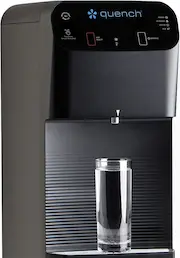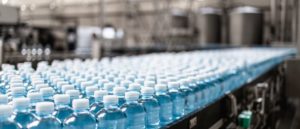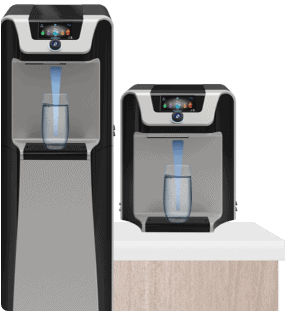At the time of writing, 7.999 billion people live on our blue planet. This figure is expected to rise to a staggering 10 billion by 2058, according to WorldoMeter. As the population grows, our resource demand is causing more and more problems. Water resources, in particular, are dramatically impacted by population growth, and water across every continent is now more polluted than ever.
Continue reading to discover more water pollution facts, how it’s harming the planet, and what Quench is doing to help combat this global water quality problem.

Global Water Issues
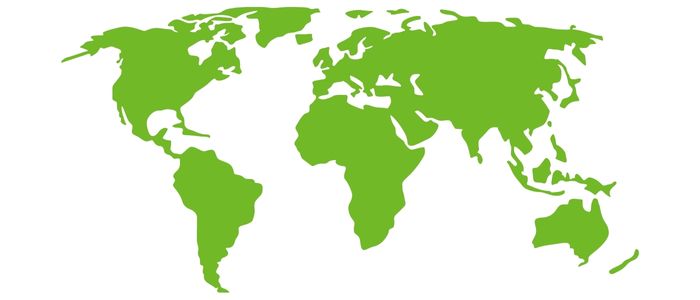
Water pollution is a global problem, and if people don’t act now there will be severe repercussions. The World Health Organization says that over 2 billion people in the world live in water-stressed countries, meaning that those people use contaminated drinking water as their main source of hydration.
Let’s dive into some of the sad facts about Earth’s water supply:
1. Water Scarcity
Around 1.5 billion people globally don’t have access to adequate sewage treatment. The World Health Organization states that about 2.2 billion people around the world don’t have safely managed drinking water services, 4.2 billion people don’t have sanitation services, and 3 billion lack basic handwashing facilities.
2. Lack of Proper Plumbing
About 5% of the world’s population defecates in the open, according to UNICEF. This is compromising the quality of nearby water bodies and poses an extreme health risk, especially for areas that don’t have access to proper sanitation needs.
3. Diseases Run Rampant
A lack of safe drinking water and sanitation in cities leads to severe health issues such as cholera, malaria, dysentery, typhoid, polio, and diarrhea. According to Unesco, one in nine people worldwide drink water from unimproved and unsafe sources that have water pollutants.
4. Unclean Water is Deadly
Studies show 3% of all deaths worldwide are related to unsafe or inadequate water, sanitation, and hygiene. Common diseases from an unclean water source cause about 485,000 deaths every year.
5. Waste Ends up in Water
Every day, over 2 million tons of sewage and industrial and agricultural waste are discharged into the world’s water. That’s the equivalent of the weight of the entire human population added together. In the United States alone, the Earth Island Journal found that 120 million tons of trash are sent to landfills every year, and a large portion of that waste ends up in natural bodies of water.
6. Water Shortages Are Becoming Common
Even though the world is made up of 70% water, 2 billion people worldwide lack access to clean water, and 2.7 billion people find water scarce for at least one month every single year. According to World Wildlife, approximately two-thirds of the world’s population will face water shortages, mainly caused by water pollution, in the year 2025.
Water Pollution in North and South America
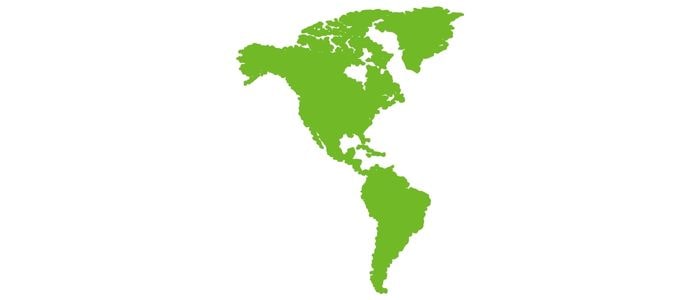
The entire world struggles with water pollution, and this includes North and South America. Although here in the United States, people may feel like this isn’t a struggle that our country has to deal with, millions of people are affected by both water scarcity and water pollution every day.
Here are some of the issues that our region struggles with when it comes to a lack of clean water supply:
7. Pesticides
Over 73 different kinds of pesticides have been found in U.S. groundwater that eventually ends up in our drinking water, unless it’s adequately filtered, according to the National Library of Medicine. Pesticides are used for crop growth all over the country, but herbicides, insecticides, rodenticides, and fungicides can all be extremely harmful once they seep into the groundwater.
8. Waterborne Diseases
In the U.S., there are 7.15 million cases of waterborne diseases a year, according to the Centers for Disease Control and Prevention.
9. Lakes and Rivers
In the United States, 51% of the rivers and 55% of the lakes are polluted and are considered unhealthy for swimming, fishing, or aquatic life, according to EcoWatch.
10. Industrial Waste
Over 1.2 trillion gallons of untreated sewage, groundwater, and industrial waste are discharged into the U.S. water annually. If the pollution continues at this rate, nearly 46% of the world’s population will have to deal with shortages of drinking water by 2050.
11. Canadian Rivers
Canada has 10 of the most polluted rivers in the world, such as the Petitcodiac River, Okanagan River, and Eastmain River.
12. Untreated Water
Over 70% of all water used in Latin America returns to rivers without any form of treatment. On top of that, the region wastes 40% of its treated water every year.
13. Unsafe Drinking Water
A staggering 36 million people across the South American continent don’t have access to clean, safe drinking water.
14. Chemical Waste
Unregulated private companies often dump chemical and industrial waste straight into rivers and streams that are used as sources of drinking water.
Water Pollution in Africa and Australia
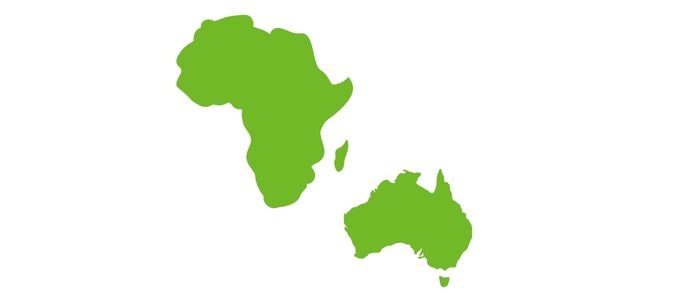
For African and Australian citizens, they experience the negative effects of plastic, chemical, industrial, and organic waste constantly. The safe water in these areas is limited, and polluted or poisonous water lowers the drinking water quality for everyone.
15. Organic Pollution
Severe organic pollution from untreated sewage in wastewater and agricultural fertilizers impact around 15% of rivers in Africa.
16. Industrial Waste
Approximately 70% of industrial waste is dumped untreated into waters, polluting the usable water supply.
17. Improved Sanitation
Sub-Saharan Africa is the slowest of the world’s regions in achieving improved sanitation, according to UNICEF. Only 54% of people are able to use safe drinking water.
18. Economic Losses
Economic loss due to the lack of water and sanitation in Africa as a result of mortality and morbidity impacts is estimated at $26 billion or about 5% of GDP, says the Water and Sanitation Program.
19. Plastic Problem
Plastic pollution is a huge problem for Australia’s oceans. According to Cosmos, Australia produces about 2.5 million tons of plastic waste annually.
20. Marine Birds Are Affected
As much as 85% of all marine birds are negatively affected by plastic pollution.
21. Polluted Water
In North Shore, Sydney, over 12,000 kilograms of dirt and over 75,000 liters of chemical detergents enter into the water supply every year.
Water Pollution in Asia and Europe
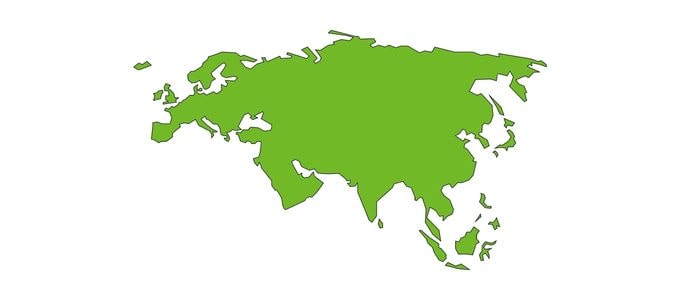
22. Dirty Drinking Water
At least 320 million people in China don’t have access to clean drinking water, says the Human Development Reports.
23. Water Sanitation
About 369 million people in the Asia-Pacific region lack water sanitation, and 165 million people lack access to clean drinking water, according to World Vision.
24. Contaminated Groundwater
Approximately 85% of the total area of Bangladesh contains contaminated groundwater.
25. Poisonous Water
Nearly 70 million people living in Bangladesh are exposed to groundwater contaminated with carcinogen arsenic, toxic trace metals, coliforms, and other organic pollutants which are poisonous.
26. Polluted Water
In China, more than half of its groundwater is polluted.
27. Dangerous Contaminants
Many contaminants have been found in water across Europe. The most worrying were pesticides, polycyclic aromatic hydrocarbons from burning petroleum or organic matter, brominated flame retardants often used in consumer products, and tributyltin — an internationally banned anti-fouling paint ingredient that leaches from boat hulls.
28. Polluted Rivers
Almost half of Europe’s rivers and lakes are threatened by poison.
29. Polluted Oceans
In Europe, water pollution from urban and industrial waste pollutes the oceans. According to The European Environment Agency, 22% of Europe’s surface water bodies and 28% of the groundwater area are affected.
What Can We Do About It?
Although the outlook for Earth’s water supply looks grim, it can get better. Each and every person can make changes to their everyday lives to lower the use of pollutants like plastic and chemicals and implement a water system that conserves H2O. Here are some ways you can reduce your carbon footprint:
Water Infrastructure Investment
Best estimates have stated that it would require at least an investment of $70 per person, per day for 10 years to update the world’s water infrastructure to the standard required to provide clean water.
Business Reasonability
A huge part of the contaminated water problem comes down to industrial waste and chemicals being dumped into public water supplies. This is a particular public health issue in Asia and Africa where regulations are pretty lax. Businesses need to take a more responsible approach to how they interact with their environment.
Personal Responsibility
Think about how you can prevent polluting water supplies. If you’ve used oil-based paint or toxic chemical compounds in your home, make sure you dispose of these materials correctly at a local recycling center. Never dispose of non-degradable products in the sink or toilet.
Use Quench Products
Quench bottleless water dispensers and other drinking water products are an amazing way to take action steps away from unsafe water and toward a cleaner and more beautiful world. Give your workplace a sustainable and safe drinking water solution that uses advanced technology and our quenchWATER+ filtration process to get rid of dissolved solids, pesticides, nitrates, fluorides, and 99% of lead, all while improving taste and smell.
Want to learn more about how Quench can make a difference at your company? Contact us to get a free quote today! And, check out our infographic with more environmental protection and dirty water facts below.
